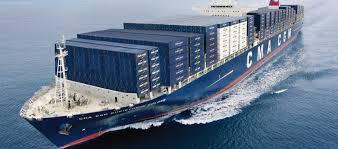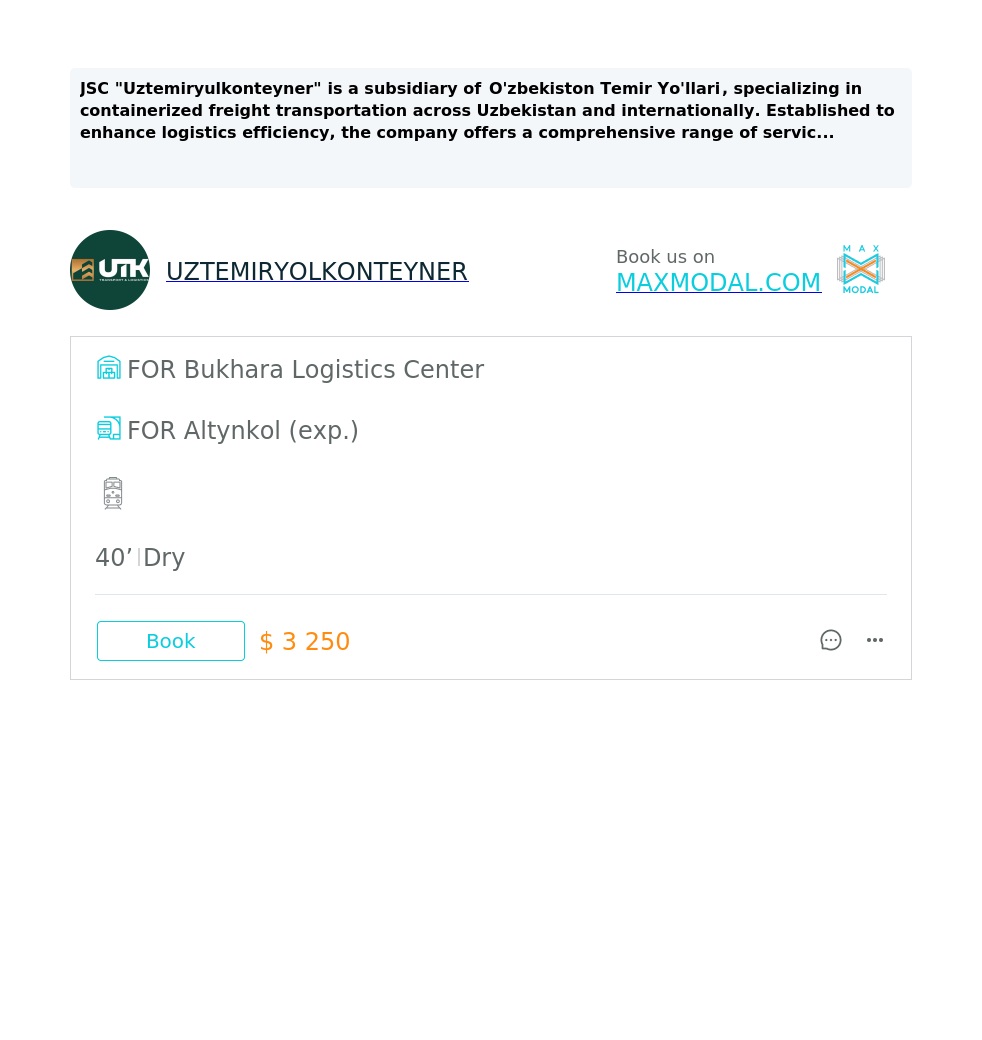Ørsted has selected the Port of Tyne's Tyne Clean Energy Park in South Shields as the marshalling base for its US$11.3 billion Hornsea 3 Offshore Wind Farm positioned to become the world's largest offshore wind farm.
The 100,000m2 site will process secondary steel components before sea installation, supporting the delivery of 197 turbines.
Upon completion, Hornsea 3 will generate sufficient clean energy to power over three million UK homes, strengthen energy security, and create significant economic opportunities through local supply chain partnerships and skilled employment.
Hornsea 3 offshore wind farm has executed a lease agreement for up to 100,000 square meters at the Port of Tyne, one of the UK's major deep-sea ports. Hornsea 3 is being developed by Ørsted, a global leader in offshore wind energy.
The site, located at Tyne Clean Energy Park in South Shields, will be fundamental to constructing and completing the 2.9 GW Hornsea 3 Offshore Wind Farm, which, once complete, is anticipated to be the world's single largest offshore wind farm.
Hornsea 3 represents an infrastructure project positioned to generate sufficient green energy to power more than three million UK homes, enhancing energy security and delivering local and national economic growth through supply chain investment.
Matt Beeton, Chief Executive Officer at the Port of Tyne, stated that Ørsted's decision to base its marshalling operations at the Port of Tyne represents another significant milestone for the North East.
Jason Ledden, Senior Project Director, Hornsea 3 at Ørsted, commented that the construction of Hornsea 3 will substantially improve UK energy security while bringing investment into the local and national economy.
Beyond partnering with the Port of Tyne for its efficient marine access to Hornsea 3, 13.0 meter deep berths, and 24/7 365-day operation during all tide states, Ørsted is collaborating with industry-leading partners to deliver the 197 offshore wind turbines required for the project.
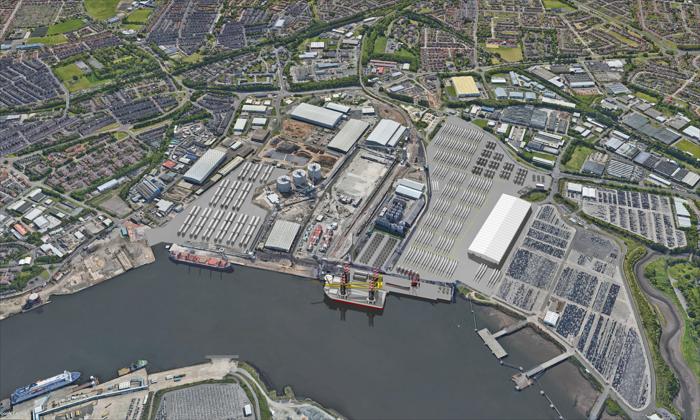
Port of Auckland launched construction of its Bledisloe North wharf with a blessing ceremony this morning.
Attended by Prime Minister Luxon and Minister Bishop, the milestone event celebrated the commencement of nearly US$200 million in developments to make the port capable of handling large vessels and support the cruise tourism industry.
The consent, which was the first approved and initiated under the Fast Track program, encompasses development of two wharves Bledisloe North and completion of Fergusson North wharf.
Roger Gray, Port of Auckland CEO, stated that the investments here today extend beyond infrastructure as they support growth and opportunity, ensuring Auckland continues thriving as an economic hub for trade and tourism.
The strategic importance becomes clearer when we consider the phrase "big ship capable."
Modern container vessels and cruise ships have grown substantially larger over recent decades to achieve economies of scale.
Ports that cannot accommodate these larger vessels risk being bypassed by shipping lines seeking more efficient operations. This creates a competitive disadvantage that can gradually erode a port's market position.
One of the most exciting aspects of this development is that this will make the port big ship capable for cruise and containers, supporting Auckland well into the future, Gray explained.
These investments establish the foundation for a stronger, more resilient port that connects Auckland to global markets and delivers value for the city.
The developments commenced today support Auckland Council's Long-Term Plan and the port's long-term strategy to consolidate port operations while retaining sufficient operational area to support the critical trade that powers Auckland businesses and homes.
The Fast Track approval program mentioned in this development represents a policy approach designed to accelerate infrastructure projects considered nationally significant.
This suggests recognition at the government level that port capacity improvements deliver economic benefits that extend beyond the immediate Auckland region to support New Zealand's broader trade competitiveness.
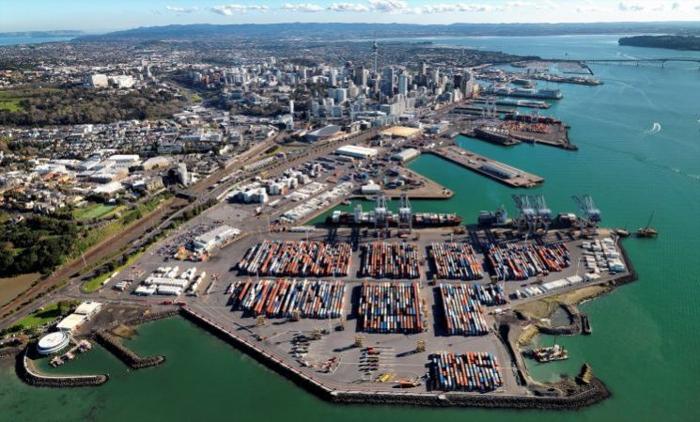
The Port of Oakland reported consistent cargo flows in August 2025, processing 192,313 TEUs, nearly matching August 2024 volumes (-0.3%).
In year-over-year comparison, imports decreased slightly and totaled 82,245 TEUS (-1.2%), while exports rose to 62,477 TEUs (+5.2%), demonstrating sustained demand from overseas markets.
August's results followed a robust July surge and reflected continued adjustments by shippers responding to tariff-related trade policy changes.
Importers moved goods earlier in the season to avoid potential disruptions, while exporters benefited from consistent overseas demand. Empty container movements aligned with seasonal patterns.
The Port handled 90 vessel calls during August, a 4.7% increase from last year, averaging 2,137 TEUs per ship, indicating efficient berth utilization and Oakland's capacity to manage large vessels.
Bryan Brandes, Port of Oakland Maritime Director, said that they anticipate cargo volumes will remain consistent through the fourth quarter, and Oakland remains committed to ensuring reliable, efficient operations for all the customers.
Through the first eight months of 2025, the Port has processed 1.54 million TEUS, a 1.7% increase compared to the same period last year, positioning Oakland for solid year-end performance as a vital US gateway for global trade.
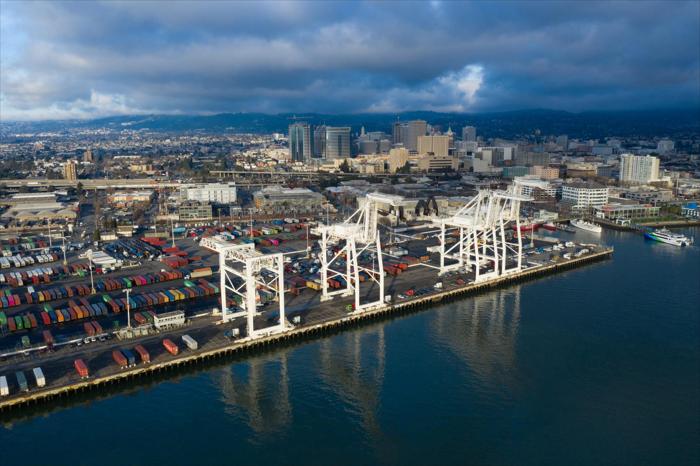
Construction is progressing at the Port of Klaipeda on a significant project supporting Lithuania's offshore wind farm development plans.
In the former International Ferry Terminal area, quay construction is currently underway.
Algis Latakas, CEO of the Klaipeda State Seaport Authority, stated that currently, in the port's southern section at the former International Ferry Terminal, constructor Tilsta is executing the first phase of infrastructure works - reconstructing quays.
In May 2022, the Klaipeda Port Authority and cargo handling company Klasco executed an investment agreement, initiating the development of port infrastructure required for Lithuania's future offshore wind projects.
The Klaipeda Port project is scheduled for completion by the end of 2026.
By 2035, two offshore wind parks with combined capacity of approximately 1.4 GW are anticipated to be operational in Lithuania's exclusive economic zone of the Baltic Sea near Palanga.
Together they could generate up to 6 TWh of green electricity annually sufficient to cover approximately half of Lithuania's current electricity demand.
The first tender for a 700 MW offshore wind park was announced on 30 March 2023.
The winners were a joint venture between Ignitis Renewables and OW Offshore S.L.
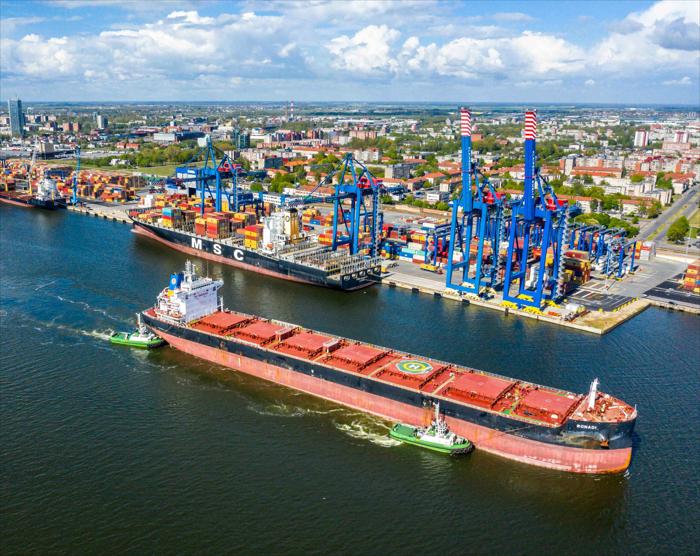
AD Ports Group announced awarding a contract to Baku Shipyard in Azerbaijan for constructing two 780 TEU container vessels designated for trade routes across the Caspian Sea.
The contract was executed with the public legal entity Azerbaijan Transport and Communication Holding, representing Baku Shipyard.
These shallow-draft vessels, specifically engineered for Caspian Sea operations, will serve a crucial role in enhancing maritime connectivity, increasing trade volumes, and strengthening the trans-Caspian logistics corridor.
The newbuilds have been designed to address growing regional containerized cargo capacity demand and ensure more efficient, reliable, and sustainable transport solutions.
Captain Mohamed Juma Al Shamisi, Managing Director and Group CEO, AD Ports Group, stated that this initiative aligns with the vision and directives of the leadership in the United Arab Emirates, and reinforces AD Ports Group's commitment to supporting growing Caspian region trade requirements.
The vessels, anticipated for delivery in Q4 2027, will be deployed on strategic routes to optimize connectivity between key Caspian Sea trading hubs.
This development follows AD Ports Group and its subsidiaries' recent Central Asian region initiatives, driven by their strategic priority to increase efficient energy resource transportation to global markets while connecting diverse regions and stimulating economic growth.
In June 2025, the Group announced the inaugural phase of Tbilisi Intermodal Hub, Georgia's first modern, bonded container and intermodal terminal, and a strategic logistics connection in the Group's emerging Central Asian transport strategy.
The advanced, rail-connected logistics center links the Caspian and Black seas through Georgia, forming a vital Middle Corridor component, representing the shortest trade route between Asia and Europe.
In July 2025, a Comprehensive Economic Partnership Agreement was executed between the United Arab Emirates and the Republic of Azerbaijan, marking a significant advancement toward strengthening the UAE's economic, trade, and investment presence in the Caucasus region, and deepening engagement and partnership with southern Caspian countries, consistent with the UAE's vision to enhance strategic partnerships with high-potential markets.
The UAE represents one of Azerbaijan's largest foreign investors, with total direct investments exceeding US$ 1 billion, reflecting the economic relationship strength between both nations and these investments' impact on supporting Azerbaijan's economic growth.
Azerbaijan also serves as a strategic trade and investment partner for the UAE, attributed to its strategic Caucasus location at the crossroads of Eastern Europe and Western Asia trade, a region of increasing economic significance.
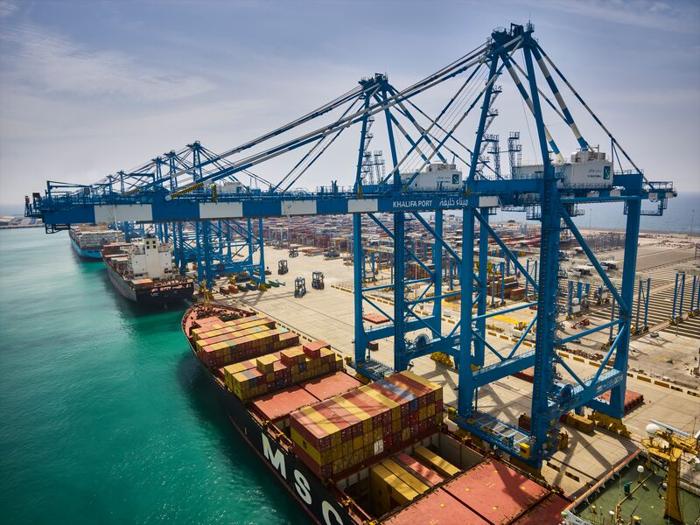
Following record cargo achievements in July, Port of Los Angeles volume sustained strength in August, as efficiently processed 958,355 TEUs, nearly matching last year's robust pertormance.
Port of Los Angeles Executive Director Gene Seroka stated at a media briefing that this represents the best two-month period for any Western Hemisphere port.
Seroka added that they anticipate container volumes will moderate through the remainder of 2025, particularly against last year's exceptionally high benchmarks. This is because much year-end holiday cargo has already arrived.
Economic indicators like decelerating job growth and persistent inflation are making both importers and consumers somewhat more cautious.
Vincent lacopella, President of Trade and Government Relations at Alba Wheels Up International, joined Seroka for the briefing. An experienced customs broker and freight forwarder, Iacopella assists shippers in navigating trade and supply chain challenges.
August 2025 loaded imports totaled 504,514 TEUS, 1% below last year. Loaded exports reached 127,379 TEUS, a 5% improvement from 2024.
The Port processed 326,462 empty container units, 1% below last year.
Eight months into 2025, the Port of Los Angeles has processed 6,934,004 TEUs, 4.5% above the same period in 2024.
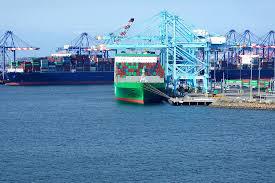
The Port of Long Beach reached its second-busiest August on record and marked the sixth-busiest month in its 114-year history. Retailers are receiving shipments purchased during a recent pause in tariffs, boosting the start of the peak shipping season.
Dockworkers and terminal operators handled 901,846 twenty-foot equivalent units (TEUS) in August. This was slightly lower than last year, down 1.3% from the record set in August 2024. Imports fell 3.6% to 440,318 TEUs, while exports dropped 8.3% to 95,960 TEUs. Empty containers moving through the Port rose 3.7% to 365,567 TEUs.
"Shifting trade policies continue to create uncertainty for businesses and consumers," said Port of Long Beach CEO Mario Cordero. "Our digital Supply Chain Information Highway shows that peak season volumes are on pace with last year as retailers stock up for the winter holidays."
Long Beach Harbor Commission President Frank Colonna praised the dockworkers. "Their hard work keeps goods moving safely and efficiently during the peak season. Our role as a primary gateway for trans-Pacific trade depends on it."
Through the first eight months of 2025, the Port has moved 6,592,708 TEUS. That is an 8.3% increase compared to the same period in 2024.

Following the latest monitoring of Amazon River water levels, CMA CGM reports that levels are decreasing at a slower pace than previously estimated.
As a result, the implementation of the Low Water Surcharge for cargo to and from Manaus has been postponed.
The surcharge will now take effect on September 15, 2025, and will apply to all imports and exports through the port of Manaus, Brazil. It will cover all types of cargo at a rate of US$ 950 per TEU, with settlement made as per freight.
This surcharge is necessary to offset additional operational costs linked to draft restrictions and reduced vessel capacity caused by low water conditions.
